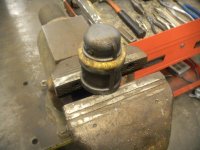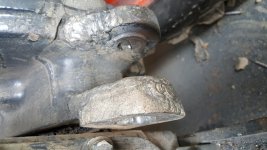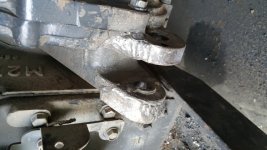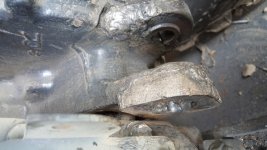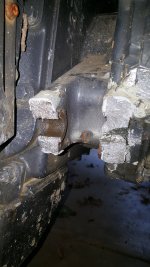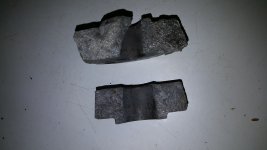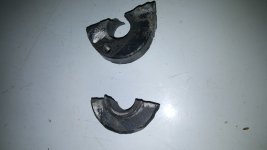DaveK OR
Silver Member
Even a crappy-looking brazing job can be stronger than the part you are fixing. As long as you get good flow through the joint, it should be quite strong enough. The cast iron part is far more likely to fail at a crack (perhaps invisible) near the joint than at the brazed joint itself. People put down brazing as an inferior repair method, but it's still a very strong way to join metal parts, and can be done with just a torch, under field conditions. If done properly, the brazing metal flows across the entire joint, to give you a very strong connection. When you weld a thick piece like that, you probably won't get full penetration unless you are very, very good.
If you do go with brazing as the repair method, you might consider using a silver-based brazing alloy (sometimes called hard-solder). You can get it to flow at lower temperatures than some of the bronze alloys, and it is available in very thin sheets or flat ribbon. You can pre-flux the joint, position pieces of the brazing alloy directly in the joint, and then if you can hold it in position while you heat, you won't have to wick the brazing alloy into the joint. It's a tricky thing, but can result in a joint easily stronger than the metal. Silver-based brazing alloy is expensive, but you really don't need very much.
If you do go with brazing as the repair method, you might consider using a silver-based brazing alloy (sometimes called hard-solder). You can get it to flow at lower temperatures than some of the bronze alloys, and it is available in very thin sheets or flat ribbon. You can pre-flux the joint, position pieces of the brazing alloy directly in the joint, and then if you can hold it in position while you heat, you won't have to wick the brazing alloy into the joint. It's a tricky thing, but can result in a joint easily stronger than the metal. Silver-based brazing alloy is expensive, but you really don't need very much.
Last edited:

